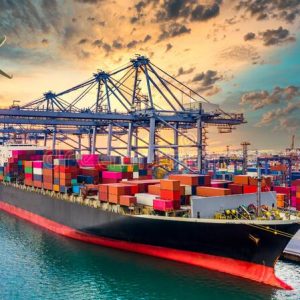“I thought my jokes were bad” storms in the Joker (the immortal Heath Ledger performance)
Remember this scene from the Batman- Dark Knight, 2008. The Joker meets the mob bosses of Gotham who are on a video call with their Accountant in some foreign location. Let’s ignore the movie for now; the Accountant is the one who is handling their loot and converting these ill-gotten proceeds by disguising them as trade receipts.
How about a magic trick!! The trade route of disguise for this conversion is termed as “TBML- Trade Based Money Laundering”. Often traditional money laundering is termed as “victimless” crime. However just like the COVID-19 times we are living in, the evolved/mutated deadly strain of money laundering is this colorless, multi-dimensional complex TBML.
FATF’s View on Trade based Money laundering
FATF put forth in 2016 the global menace of trade-based money laundering and sounded an alarm that it was the most sophisticated method to launder tainted money and perhaps even a channel for terrorist financing. One and a half decade later, this menace of TBML has grown bigger in myriad combinations with tax/custom evasion, bribery and corruption, narcotics and even cybercrimes.
Experts across the spectrum; WTO, United Nations and IMF have estimated trade based money laundering to be more than Billion Dollars. Since this menace is growing day by day, most regulators and FIU’s now have their focus on Trade Based ML. With the USD 1.77 billion fraud in the State run banks, although RBI classified it as operational risk on account of staff collusion, the area where fraud was perpetrated is termed “Trade Finance”.
Certified TBML Expert by Indiaforensic
IndiaForensic has been at the forefront of educating the Trade Finance and AML professionals and gauging the same, we have already introduced Certified Trade Based Money Laundering Expert course. Most Financial Crime professionals in India are aware of the commonly used typologies, few smurfing like scenarios as well as adhering to the RFI’s that are issued by FIU IND time and again. However our focus shall be “Trade”, yes related to Trade Finance- LC, International cross border SWIFT transactions, etc. However, let’s not forget trade based laundering can also stem domestically and considering the array of Central and/or State legislations, its easier for criminal minds to use the trade beaker to change the character of money.
How do we know its Trade based Money Laundering
Its complex, if it were so easy to detect, perhaps perpetrators wouldn’t use this route to launder at all. Most bankers are aware of the Trade Finance department; this area attains prime focus in TBML. As AML professionals, you are not just supposed to be well versed with the SWIFT trade jargons, you also need to identify the real motives of the movement of goods. You are expected to clearly understand the scheme of things even behind the corporate veils and numerous parties involved across the countries as well as complex web of transactions.
Identifying Red Flags to mitigate Trade Risk
Most of us are given a dose of theory, check the nature-purpose-parties involved in trade or trade finance, yes that’s mandatory basic. Check the profile, risk category of customers, risk category of industry it belongs, the vessel tracking details, etc are all spelt out. Many of us would have even followed this “textbook” approach, however when these perpetrators think out of box, we have to apply minds outside the textbook theories. We attempt to list out a few things you must closely watch out for.
The seven tricks
- Free Trade Zones: Yes, these are for export promotions but a common thread across reported previous cases reveals, this scheme is widely used due to the lesser restrictions, subsidy drawbacks and an inherent goodwill associated with the industries in these zones.
- Documentation: Although things are paperless, the inherent capability of reading between the lines and understanding what is not written skillsets are required. Simple appearing discrepancies in description of goods and bill of lading, frequent changes in shipment routes, transshipment illogically passing through on or more jurisdictions,
- Valuation: This is a bone of contention right from equity to taxation, the value determination in comparison with the determinable fair market value for the same set of goods, dual classification of goods, arbitrage effects-cheap appearing goods in one market might be expensive elsewhere.
- Misdirection:
- Under and over invoicing: Not expected to know the trade in and out, but using a common sense and peer players in the same industry helps. Eg. If you see a trade bill of tons of fruits shipment, don’t look at the prices of fruits, look what route-average size of shipments, etc. if anything looks odd inquire, your trained minds can reconstruct if rationale of transactions appear genuine.
- In some cases, the change in quantities compared to peers or last shipment (overstating or understating) can be used to partially cover up for illicit funds and process proceeds with the legit ones
- Misinterpretation of goods shipped that may fall in two categories yet the oddest one will be used for TBML reasons.
- Trade relationships: “Customer profile” extension and especially maintaining a profile of the counterparty/ies involved, are there any apparent family/business relationships might point towards Ultimate Beneficial Owner, trade profile vis-à-vis shipment size, length of relationship, presence of counterparties in jurisdictions that do not have logic, any blacklisting or caution advisory against the parties, the TGSTBT (Too Good To Be True) syndrome showing parties, etc.
- Paying attention to detail without ignoring the larger picture? Minute detail checking helps, but having the basic, WHO-WHERE-WHOM-WHAT & HOW MUCH should be looked into with a WHY? If it any inconsistency appears, put it through the economic rationale test. Checking the corporate structures and running them against MCA vanishing blacklists, single/multiple banking arrangements and preparing a “trade profile” of the customer helps in determining the risk levels.
- Other considerations: Newer modus operandi have been devised now, like sale of customized software, the value of which is determined only by the contracting parties which is permissible under law, use of tax havens to move out of the radar and operate/convert with secrecy to rebound back through some other color-able device and conversion between the fiat and Cryptocurrency to effectively negate audit trails are happening. In some case, TBML has been used as a double whammy to launder illicit proceeds from the predicate crimes and in combination with the use of SEZ/ Free Trade Zones, GST refunds as incentives have also been claimed. A close watch over such exceptional cases is warranted.
What can be done?- Solution to the Challenge
The areas above are not exhaustive and a one size fits all approach cannot be used. Therefore, it is pertinent to define “Trade risk” and effectively implement the TBML RFI’s as shared by FIU IND. These parameters shall keep evolving along with the trade and therefore be updated at periodic intervals. The TBML based alerts, will have to be checked with analytical mindset, industry wise triggers.
Having robust AML software system alerts will show pattern that do not fall in the normal trade parlance, yet all you need to do is follow the breadcrumbs and ensure you reach a logical conclusion. The alerts will only aid you or perhaps reduce time in the reducing the voluminous dump, yet each case/ each transaction will have to be gauged through its merits. Some offline behavioral aspects regarding the customer and his transaction patterns, including investments and its types held as well as lifestyle changes could also trigger suspicion.
Like in the old Hindi movies, the poor child in past turns out to be a Rich Hero suddenly with no astronomical rise in fortunes without apparent profile, the answer he would always give is. Import Export. ! (With no offence to the Import-Export traders, you are the engines of our economy helping with valuable foreign exchange). All you need to do is pay attention and look beyond the obvious.
The Way Ahead….
You might definitely want to talk to Trade Finance colleagues, get certified with hands on learning course and maintain close network with peers in the AML domain to foresee changes that occur especially in these unprecedented pandemic times.
India as a jurisdiction is evolving, significant progress has been made and I am sure the regulatory set up also is aware of persisting lacunae. With the ever increasing digitization process, regulatory changes forcing maintaining clear documentation trails and single window clearance are sweeping the TBML minefields. Ease of business therefore ensures no more ease of money laundering, yet the policies, people and process should work in coordination and try to eradicate the TBML menace.


